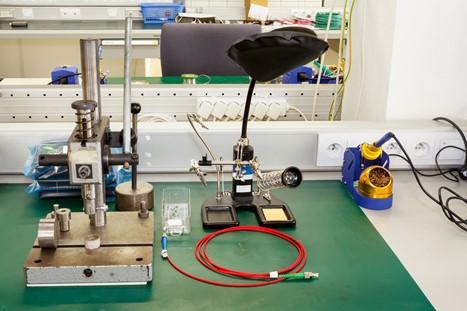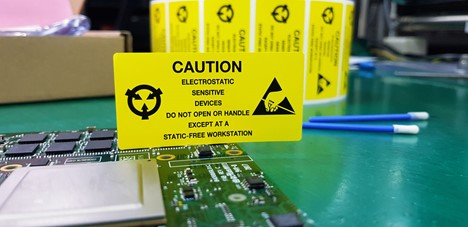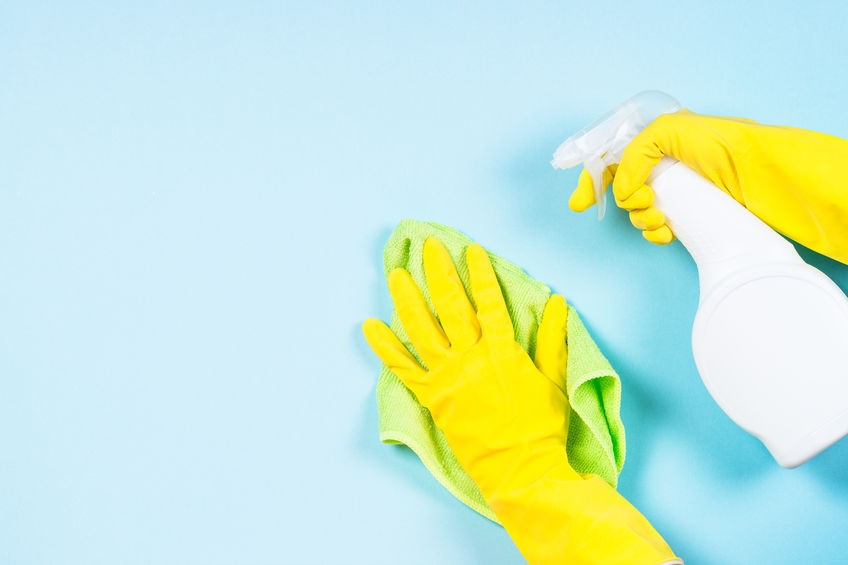How to Clean ESD Mats

Maintaining a clean and safe static-free work environment requires ESD-safe workroom essentials such as ESD mats. In a workspace, there may be workstations using quality ESD table mats and/or ESD floor mats. These mats come in a variety of models, sizes, and colors to help companies create a comfortable workspace that incorporates solid grounding.
After installing ESD mats and seeing them hold up well under constant use, the next step is often looking for ESD mat cleaning advice. We are happy to delve into this important topic and detail exactly how to keep all of your ESD mats clean and ready for use each day.
Why ESD Mats Must Be Cleaned
ESD mats may look like standard industrial mats, but they are engineered to serve a specific purpose. Their anti-static features are contained within the mat’s material, and their resilience is usually assured as long as they are properly maintained. Like most workroom mats, it doesn’t take long for dirt, dust, and debris particles  to accumulate on the mat’s surface. As these particles accumulate, they can create a build-up that drains the mat of its anti-static energy. Unless the mat is cleaned, it remains less effective for its purpose, and overly soiled mats can even become equivalent to a standard insulated rubber mat, ruining the company’s investment.
to accumulate on the mat’s surface. As these particles accumulate, they can create a build-up that drains the mat of its anti-static energy. Unless the mat is cleaned, it remains less effective for its purpose, and overly soiled mats can even become equivalent to a standard insulated rubber mat, ruining the company’s investment.
It’s always a good idea to set up a mat cleaning schedule for employees to ensure these mats remain in “like new” condition over the long term. Mats can be cleaned daily, every few days, weekly, or monthly, depending on how often they are used or how fast they get dirty.
Choosing an Anti-Static Mat Cleaner
There are two ways to clean your ESD mat — dry cleaning and wet cleaning. Dry cleaning involves sweeping the mat with a cleaning brush or broom (or using a dry cloth or mop) to wipe off the surface. Wet cleaning involves using clean water or a special cleaning solution to wipe the mat’s surface clean.
Many workplaces choose to use a cleaning solution for this purpose. However, the type of cleaning solution used is crucial to keeping the mat working as it should. For instance, you shouldn’t use any cleaner that contains alcohol in the ingredients. Alcohol can dry out these mats, causing them to lose static fighting abilities. You also shouldn’t use household multipurpose cleaners or any other cleaners not made especially for ESD mats.
Instead, opt for ESD mat cleaners that clean and control static electricity. Quality cleaning solutions are biodegradable, quick drying, and non-flammable.
Safe Mat Cleaning
Whatever mat cleaner you decide to use, be sure to follow the manufacturers’ instructions for safe usage. Typically, these solutions either come in a spray bottle or a spray bottle is included separately in a kit for hand cleaning application. Highly concentrated formulas tend to last longer than diluted formulas.
Learning how to clean an ESD mat is simple. Table mats can be cleaned using a cleaning formula placed into a spray bottle. Simply spray the entire surface area with cleaner and use a clean, lint-free cloth or paper towel to wipe the cleaner off. Wipe vertically, horizontally, or using circular motions. One application is enough to do the job.
To clean floor mats, dip a damp, clean cotton mop into the cleaning solution, squeeze out excess cleaner, and mop the mat surface.
ESD mats can be tested after cleaning to ensure they are rejuvenated and ready for use.

